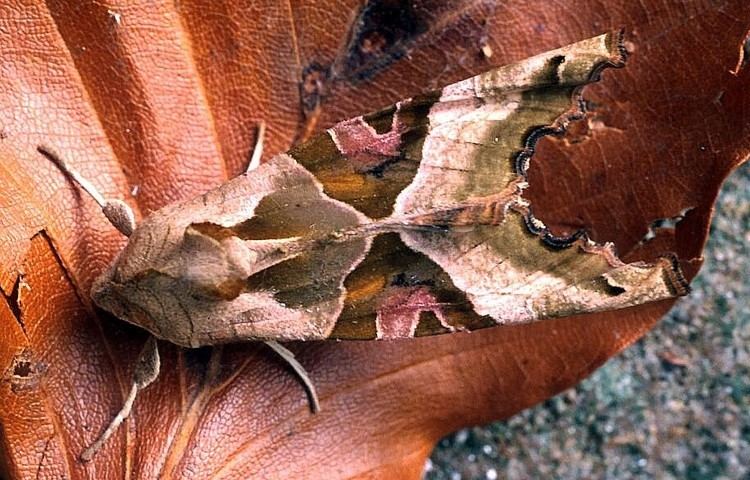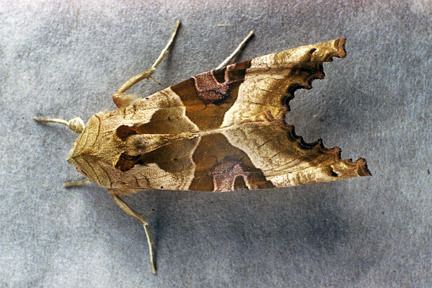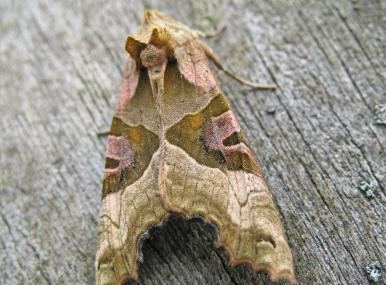Higher classification Phlogophora | Scientific name Phlogophora meticulosa Rank Species | |
 | ||
Similar Phlogophora, Butterflies and moths, Large yellow underwing, Silver Y, Noctuidae | ||
Angle shades moth
The angle shades (Phlogophora meticulosa) is a moth of the family Noctuidae. It is distributed throughout Europe as far east as the Urals and also in the Azores, in Algeria, and in Asia Minor, Armenia, and Syria. It is strongly migratory.
Contents
- Angle shades moth
- The river song smokey angle shades
- Description
- Technical description and variation
- Biology
- Recorded food plants
- References

The river song smokey angle shades
Description

This species has a wingspan of 45–52 mm and the forewings are very distinctively shaped with a sharply pointed apex. The common name is derived from the characteristic markings on the forewings: the base colour is buffish, brown towards the termen, and is marked with a bold v-shaped pink and green marking. Despite this bright colouring, the angular markings provide excellent disruptive patterning camouflage. The hindwings are whitish with darker venation.
Technical description and variation

Wingspan of 45–52 mm. Forewing whitish ochreous, the base and costal area extensively pinkish; a triangular space on inner margin before the inner line, the terminal area beyond submarginal line, and a costal shade beyond outer line olive greenish; central area dark green, pinkish towards costa, triangular in shape, the blunt apex resting on inner margin; the 3 stigmata more or less rosy green, the two upper with pale lateral edges; outer line double and angled outwards on vein 5; submarginal line preceded by a blackish green lunule between veins 6 and 7; fringe rufous green, blackish along the excision below vein 4; hindwing pale ochreous, with the discal spot, veins, and often the whole inner half tinged with greenish fuscous; dark outer and double submarginal lines, the latter often forming a grey band below vein 4; ab. roseobrunnea ab. nov [Warren] from the Azores, S. Jorge, has the central triangle rich redbrown tinged with fulvous, the whole wing reddish tinged, and the green shades all strongly mixed with reddish, the metathorax and dorsal tufts also being deep fulvous instead of green.
Biology

Two broods are produced each year, and in the British Isles, the adults are on the wing from May to October.[1] This moth flies mainly at night and is attracted to light and sugar. It may often be seen during the day at rest on fences and garden foliage.

Larva dull green or pinkish-brown, thickly dotted with pale; dorsal line whitish, interrupted; lateral lines narrowly whitish; segments 4—11 with oblique darker lateral stripes. The larva is green or brown with reddish spots along the sides and faint dark chevrons along the back. It feeds on a wide variety of plants (see list below). This species overwinters as a larva.
There is a similar related moth called the small angle shades, Euplexia lucipara.
Recorded food plants
See Robinson, G. S. et al.

